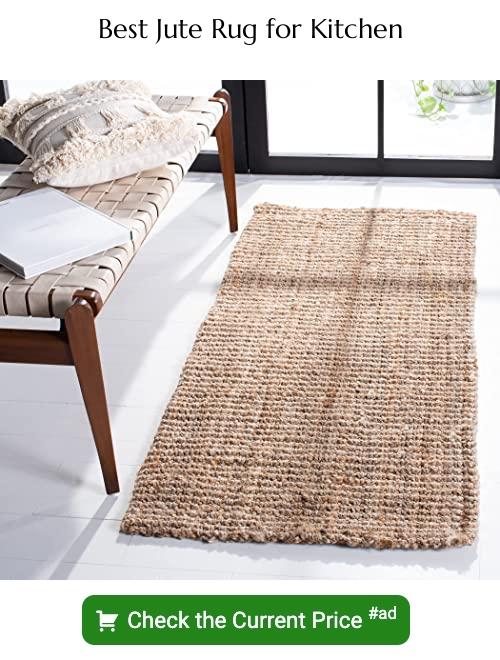Last updated on
Discover the benefits and drawbacks of using jute rugs in your kitchen as we explore their suitability for this essential space in your home.
The kitchen is the heart of any home, and it’s important to ensure that every aspect of it is functional and stylish. When it comes to choosing a rug for your kitchen, there are many options available in the market.
However, one material that has gained popularity in recent years is jute. But are jute rugs good for kitchens? In this article, we’ll explore the benefits and drawbacks of using jute rugs in your kitchen so you can make an informed decision when selecting the perfect rug for your space.
What's Inside
Jute Rugs: Origin and Material

The plant has been cultivated for centuries in these regions and was traditionally used to make ropes, twine, and other household items. Jute fiber is extracted from the stem of the plant by a process called retting, where it’s soaked in water until it softens enough to be stripped away.
The resulting fiber is strong yet flexible with a golden-brown color that gives jute rugs their distinctive look. Because they’re made from natural materials, jute rugs are eco-friendly options for home decor enthusiasts who want sustainable products that don’t harm the environment.
In recent years there has been an increase in demand for organic products as people become more aware of environmental issues such as deforestation and pollution caused by synthetic materials production processes. As a result, many manufacturers have started producing organic or eco-friendly versions of traditional home decor items like carpets or area rugs using materials like bamboo silk or recycled plastic bottles.
Characteristics of Jute Rugs
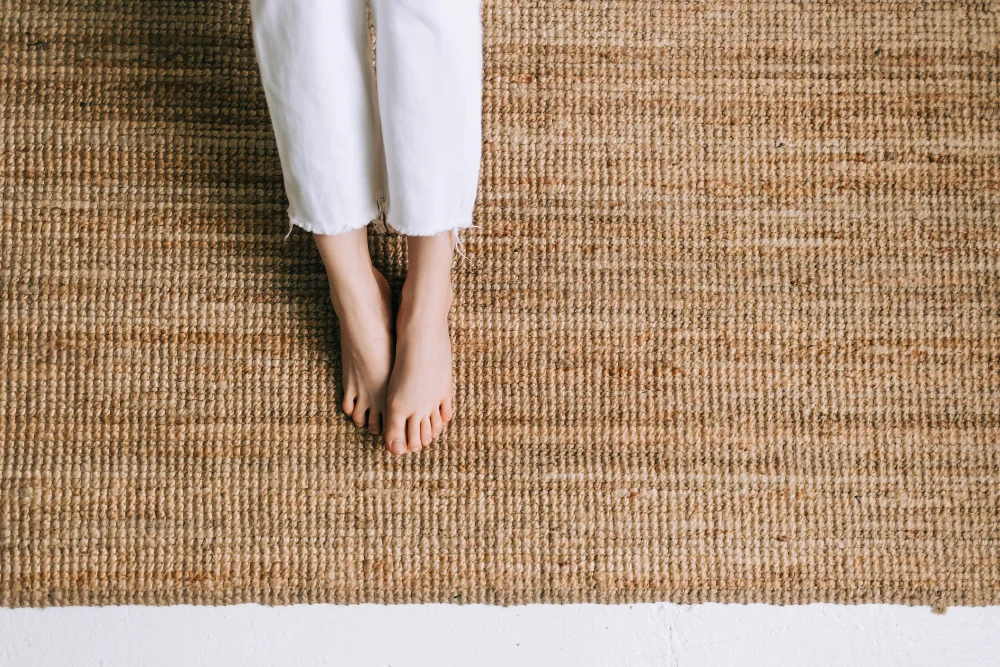
These rugs have a unique texture and appearance that sets them apart from other rug materials. One of the most notable characteristics of jute rugs is their softness underfoot, making them comfortable to walk on for extended periods.
Another characteristic of jute rugs is their durability. Jute fibers are strong and can withstand heavy foot traffic without showing signs of wear or tear quickly.
However, it’s essential to note that while these types of carpets can last for years with proper care, they may not be as durable as synthetic fiber options like nylon or polyester.
Jute also has excellent insulating properties; this means it helps keep your kitchen warm during cold weather conditions by trapping heat inside its fibers.
Jute Rug Durability

Jute rugs are known for their strength and durability, making them an excellent choice for high-traffic areas like kitchens. The natural fibers in jute rugs make them resistant to wear and tear, which means they can withstand heavy foot traffic without showing signs of damage.
However, it’s worth noting that jute rugs may not be as durable as some synthetic materials like nylon or polyester. While they are strong enough to handle daily use in a kitchen setting, they may not hold up well under extreme conditions such as exposure to direct sunlight or moisture.
To ensure maximum longevity from your jute rug investment, it’s essential that you take proper care of it by vacuuming regularly and avoiding spills whenever possible. With proper maintenance practices in place, you can expect your jute rug to last several years before needing replacement.
Jute Rug Water Resistance

Kitchens are high-traffic areas that are prone to spills and splashes, making it essential for any rug used in this space to be water-resistant.
While jute rugs may not be completely waterproof, they do have some level of resistance against moisture. Jute fibers naturally repel water due to their waxy coating, which makes them less susceptible than other natural fibers like cotton or wool.
However, if a spill occurs on a jute rug and is left unattended for an extended period, it can cause damage as the fiber absorbs moisture over time. It’s crucial always to clean up spills immediately by blotting with a dry cloth or paper towel until all excess liquid has been removed from the surface of your jute rug.
Jute Rug Stain Resistance
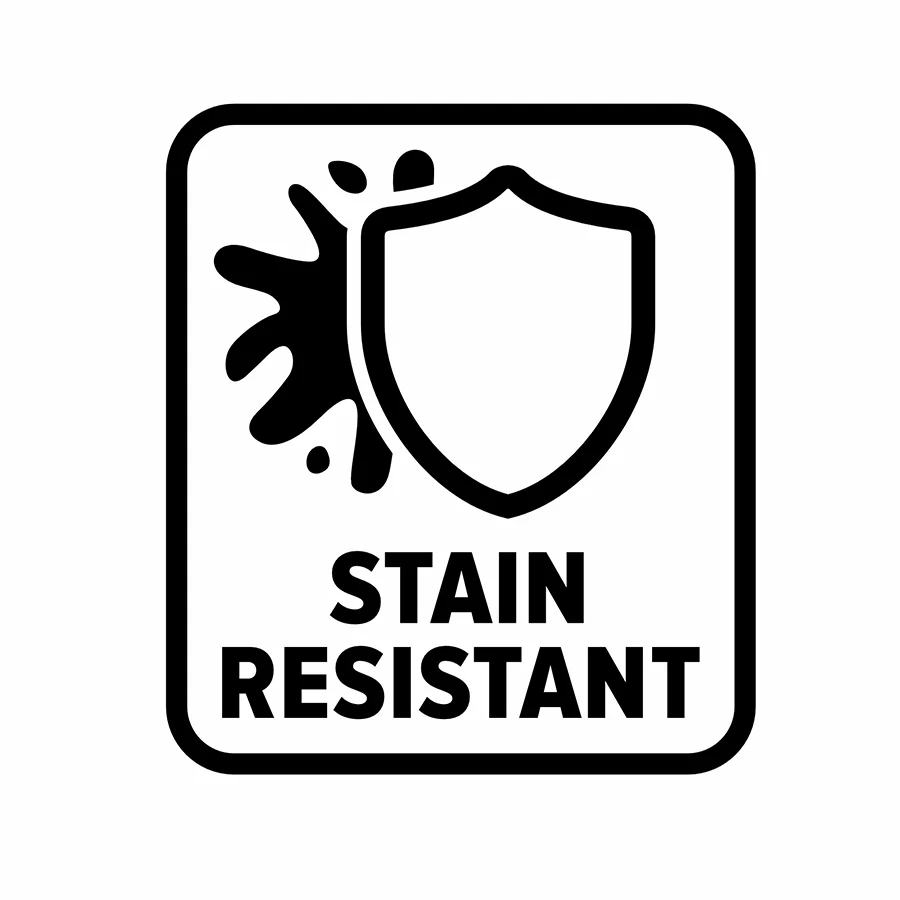
Jute rugs are not naturally stain-resistant, and they can be easily stained by spills or food splatters. However, there are ways to improve their stain resistance.
To make jute rugs more resistant to stains, manufacturers often treat them with chemicals that repel liquids and prevent staining. These treatments can help protect your rug from spills and other accidents in the kitchen.
It’s important to note that even with these treatments, jute rugs may still be susceptible to staining if spills aren’t cleaned up promptly or if harsh cleaning products are used on them. To avoid damaging your rug further while trying to remove a stubborn stain, it’s best always first check manufacturer instructions for cleaning recommendations.
Jute Vs. Other Rug Materials
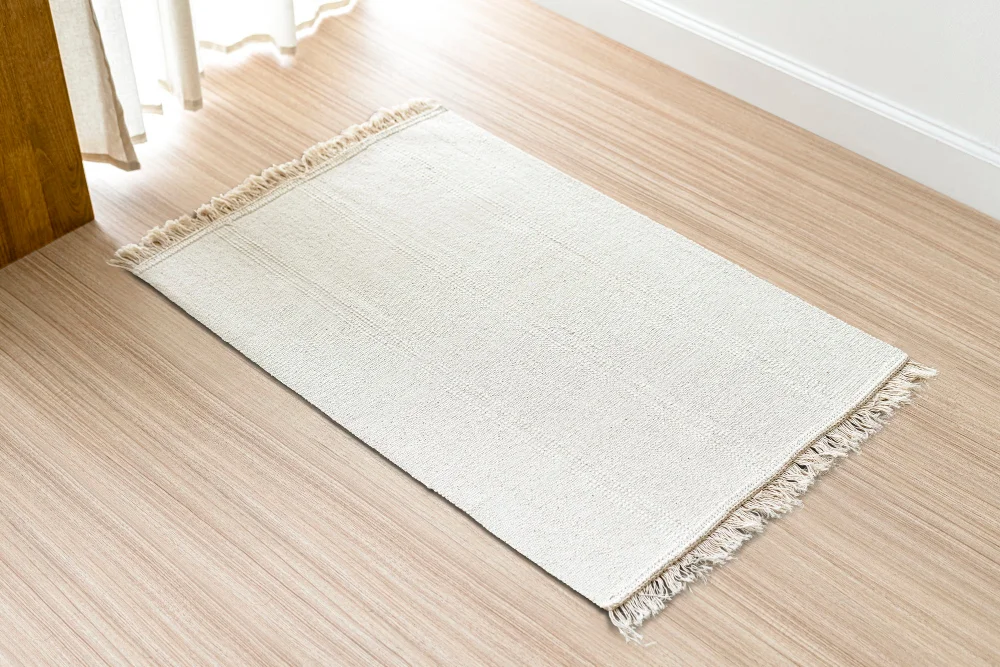
Jute rugs have gained popularity in recent years due to their natural and eco-friendly properties. However, jute is not the only material that can be used for kitchen rugs.
Cotton is another popular choice for kitchen rugs as it’s soft and easy to clean. It’s also affordable compared to other materials like wool or silk.
Wool is a durable material that can withstand heavy foot traffic but may require professional cleaning from time-to-time due to its absorbent nature.
Synthetic fibers such as nylon or polyester are also commonly used in rug manufacturing because of their durability and stain resistance properties. They’re often less expensive than natural fiber options but may not provide the same level of comfort underfoot.
Pros and Cons of Jute Rugs
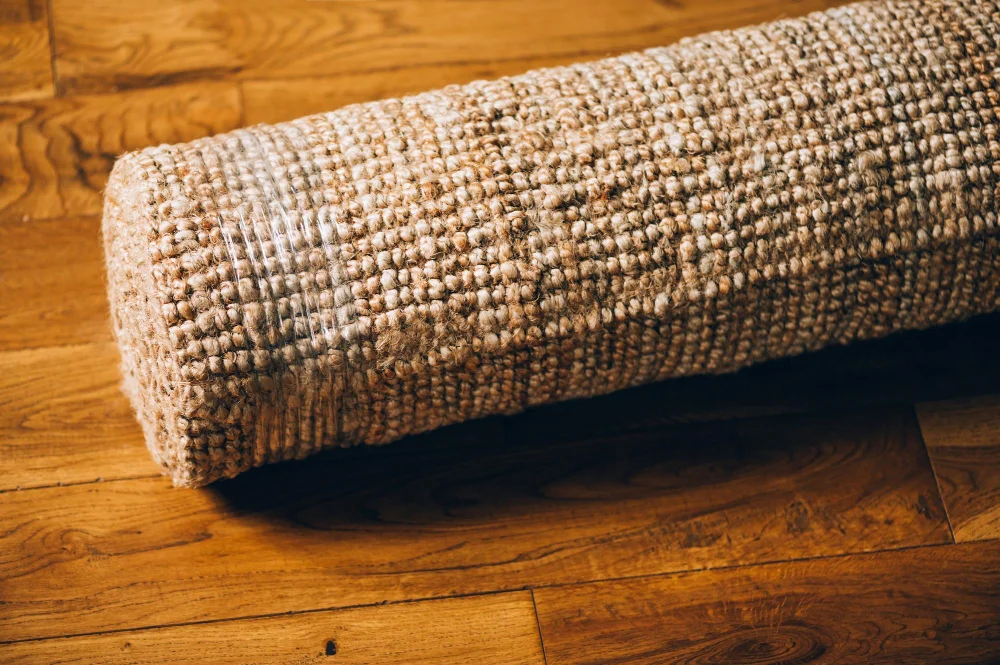
Here are some pros and cons to consider before deciding if a jute rug is right for your kitchen:
Pros:
- Natural Material: Jute is an eco-friendly natural fiber that’s biodegradable.
- Aesthetically Pleasing: The rustic texture of jute adds warmth to any space.
- Durable: Jute fibers are strong enough to withstand heavy foot traffic without showing signs of wear quickly.
- Affordable Option: Compared to other natural fiber rugs such as wool or silk, jutes tend to be more affordable.
Cons:
- Prone To Stains And Water Damage: Due to its absorbent nature, spills can leave permanent stains on the rug. Also not ideal for areas where water damage may occur frequently
- Not Ideal For High Traffic Areas With Pets Or Children : While durable overall , it may not hold up well against pets’ claws or children’s rough play
- Rough Texture : Some people find the texture too rough underfoot
Jute Rug Allergies and Health Considerations

If you or anyone in your household has allergies or sensitivities to natural fibers, it’s essential to consider the potential health risks of using jute rugs.
Jute is a plant-based fiber that can cause allergic reactions in some people. Symptoms may include skin irritation, itching, sneezing, and respiratory issues such as asthma attacks.
Jute fibers can attract dust mites and other allergens that could exacerbate existing allergies.
To minimize the risk of allergic reactions from jute rugs in your kitchen space:
- Consider opting for synthetic rug materials like nylon or polyester.
- Choose low-pile options with tightly woven fibers that are less likely to trap allergens.
- Regularly clean and vacuum your rug to remove any accumulated dirt or debris.
- Use an air purifier with HEPA filters if you have severe allergies.
Environmental Impact of Jute Rugs

Jute is a natural fiber that is biodegradable and renewable, making it an excellent choice for those who want to reduce their carbon footprint. Unlike synthetic materials like nylon or polyester, jute does not release harmful chemicals into the environment during production or disposal.
Furthermore, jute plants require less water than other crops used in rug manufacturing such as cotton. They also do not need pesticides or fertilizers to grow successfully since they have natural resistance against pests and diseases.
Another environmental benefit of using jute rugs is that they can be recycled at the end of their lifespan. You can either compost them in your garden or send them to recycling facilities where they will be turned into new products.
Jute Rug Cost and Affordability

Jute rugs are generally more affordable than other natural fiber rugs such as wool or silk, making them an attractive option for those on a budget. However, the price of jute rugs can vary depending on factors such as size, quality of material and construction.
Handmade jute rugs tend to be more expensive than machine-made ones due to the time and effort required in their production. Larger sized jute rugs will naturally cost more than smaller ones.
It’s worth noting that while cheaper options may seem appealing at first glance; they may not last long or provide adequate durability over time. Investing in a high-quality jute rug might mean spending extra money upfront but could save you money in the long run by avoiding frequent replacements.
Ultimately when considering cost and affordability of a Jut Rug for your kitchen space it is essential that you weigh up all these factors before making any purchase decisions so that you get value for your money without compromising quality or style!
Jute Rug Brands and Manufacturers
Some of the most popular brands and manufacturers of jute rugs include Safavieh, nuLOOM, Anji Mountain, Natural Area Rugs and World Market. These companies offer an extensive range of styles and sizes in their collections so that you can find the perfect fit for your kitchen.
Safavieh is one such brand known for its high-quality natural fiber rugs made with sustainable materials like jute. Their hand-woven Jute Rug Collection features various designs ranging from simple solid colors to intricate patterns.
NuLOOM is another well-known name in the world of home decor offering affordable yet stylish options when it comes to natural fiber rugs including jute ones. They have an impressive collection featuring different textures and weaves suitable for any interior design style.
Anji Mountain offers eco-friendly floor coverings made using renewable resources like bamboo silk or wool but also has some beautiful options available in their Jutes Collection which includes both traditional as well as contemporary designs.
Natural Area Rugs specializes exclusively on natural fiber area rugs including those made with 100% pure organic Indian hemp fibers which are similar in texture and durability compared to those crafted out of pure Jutes fibers.
World Market’s selection includes many unique handmade pieces sourced directly from artisans around the world who use traditional techniques passed down through generations making each piece truly one-of-a-kind.
Jute Rugs: Style and Aesthetics

Jute fibers have a unique texture that adds depth and dimension to any space, making them an excellent option if you’re looking to add some visual interest to your kitchen floor.
One of the most significant advantages of jute rugs is that they come in various styles, patterns, and colors. You can find jute rugs with intricate designs or simple geometric shapes that complement your existing decor seamlessly.
Because jute is such an absorbent material when it comes into contact with dye or paint during manufacturing processes; it takes on color beautifully.
When choosing the right style of jute rug for your kitchen space consider factors like size (smaller sizes work better), pattern (simple patterns work best), color scheme (neutral tones are ideal) as well as other design elements present within the room such as cabinetry finishes or wall colors.
Jute Rugs: Size and Placement
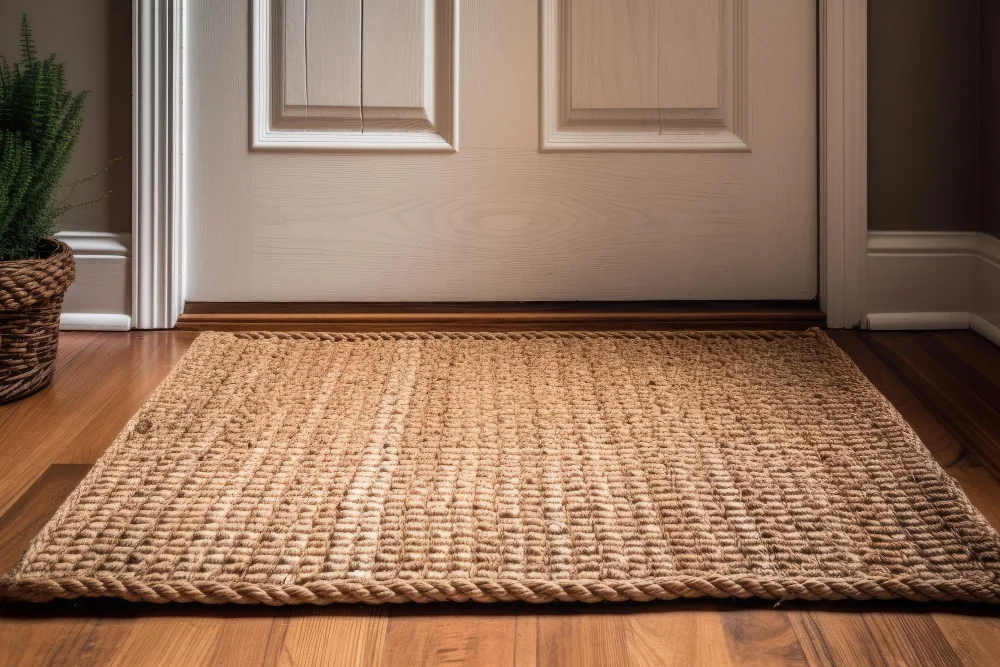
The size of your rug will depend on the dimensions of your kitchen and how much floor space you want to cover. A small jute rug can be used in front of the sink or stove, while a larger one can be placed under a dining table or in an open area.
Placement is also important when it comes to ensuring that your jute rug lasts as long as possible. Avoid placing it near sources of moisture such as sinks or dishwashers, which could cause water damage over time.
Avoid placing heavy furniture on top of the rug since this could cause permanent indentations.
Consider using a non-slip pad underneath your jute rug if you’re concerned about slipping hazards in high-traffic areas like kitchens where spills are common occurrences.
DIY Jute Rug Options
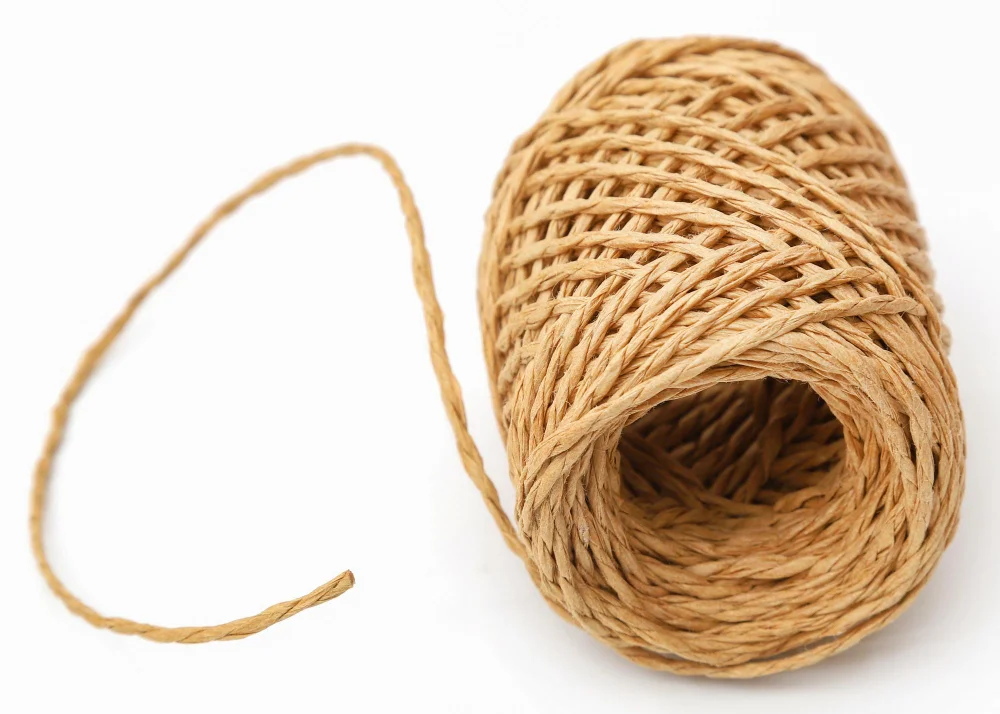
Making your own rug allows you to customize the size and shape of the rug according to your needs and preferences.
To make a DIY jute rug, all you need is some jute rope or twine, scissors, and non-slip padding. Start by measuring out the desired size of your rug on the non-slip padding material.
Cut it into shape using scissors.
Next, take one end of the jute rope/twine and start coiling it around itself tightly in concentric circles until you reach about 2-3 inches in diameter. Then use hot glue along with each coil’s edge as needed while continuing this process until reaching its desired width.
Once done with coiling up enough length for covering most parts of that cut-out pad area (leaving at least 1 inch margin), tuck under any loose ends neatly before gluing them down securely onto their respective coils’ edges using hot glue again if necessary – voila! You have yourself an affordable yet stylish DIY Jute Rug!
Tips for Choosing the Right Rug for Your Kitchen

First and foremost, think about the size of your kitchen and where you want to place the rug. A small area rug in front of the sink or stove can add warmth and comfort underfoot while protecting your floors from spills and stains.
Next, consider the style of your kitchen. If you have a modern or minimalist space, a jute rug with clean lines may be perfect for adding texture without overwhelming other design elements.
On the other hand, if you have an eclectic or bohemian-style kitchen with lots of colors and patterns going on already, a bold patterned jute rug could be just what’s needed to tie everything together.
Another important factor is durability – since kitchens tend to see heavy foot traffic as well as spills that need cleaning up quickly before they stain permanently into rugs fibers; choose one made from durable materials like jute that can withstand wear-and-tear over time.
Alternatives to Jute Rugs
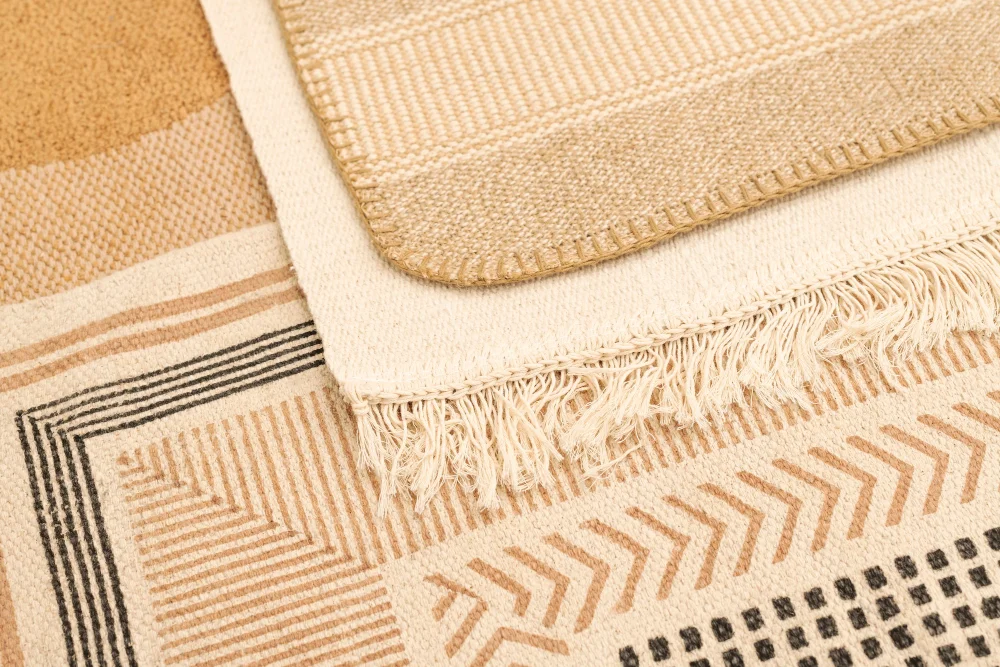
If you’re looking for an alternative to jute rugs in your kitchen, there are several other materials to consider.
One popular alternative is cotton. Cotton rugs come in a variety of colors and patterns and can be easily washed or spot cleaned as needed.
They also tend to be softer than jute, making them more comfortable underfoot.
Another option is wool. Wool rugs are durable and naturally stain-resistant, making them ideal for high-traffic areas like kitchens.
They also have insulating properties that can help keep your kitchen warm during colder months.
If you’re looking for something more eco-friendly than traditional synthetic fibers but still want the durability of a natural material, bamboo might be worth considering as well. Bamboo rugs are made from sustainable materials and offer similar durability to jute while being water-resistant and easy-to-clean.
Jute Rug Cleaning and Maintenance
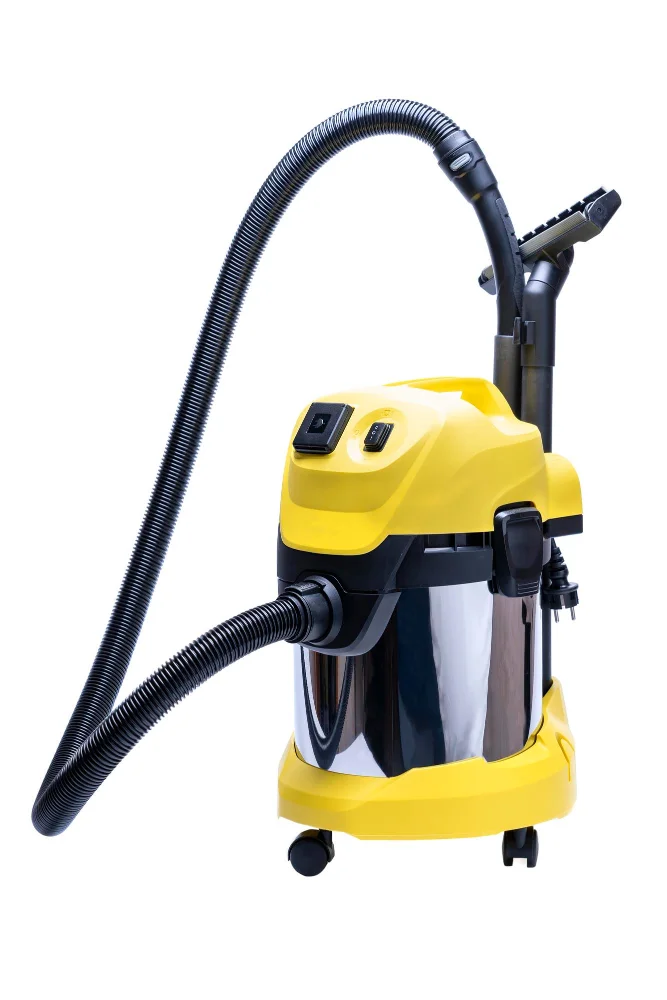
It’s important to note that jute is a natural fiber and can be sensitive to moisture. To keep your jute rug looking its best, avoid placing it in areas where spills or water damage may occur.
Regular vacuuming is essential for keeping your jute rug free of dust and dirt particles that can accumulate over time. Use a soft-bristled brush attachment on your vacuum cleaner to gently remove any debris from the surface of the rug.
If you do spill something on your jute rug, blot up as much liquid as possible with a clean cloth or paper towel immediately. Avoid rubbing the stain as this will only spread it further into the fibers of the rug.
For more stubborn stains such as oil-based spills or pet urine, consider using an eco-friendly carpet cleaner specifically designed for use on natural fiber rugs like jute. Always test any cleaning solution in an inconspicuous area first before applying it more broadly across the entire surface of your rug.
To prevent mold growth or mildew buildup due to excess moisture exposure (such as high humidity), ensure proper ventilation in rooms where you have placed Jut Rugs by opening windows regularly if possible.
Expert Opinions On Jute Rugs

According to them, jute rugs are an excellent choice for adding texture and warmth to your kitchen space. They also noted that jute is a natural fiber that is eco-friendly and sustainable.
However, they cautioned against using jute in areas with high moisture levels or heavy foot traffic as it can be prone to staining and wear over time. They recommended placing a rug pad underneath the rug for added cushioning and protection.
Jute Rug User Reviews

What do users of jute rugs have to say about their experience with this material?
User reviews of jute rugs are generally positive, with many people praising the natural look and feel of the material. Jute is known for its softness underfoot, making it a comfortable choice for areas where you spend a lot of time standing or walking.
One common concern among users is that jute can be difficult to clean if it gets stained or soiled. However, some reviewers note that regular vacuuming and spot cleaning can help keep your rug looking fresh.
Another consideration when choosing a jute rug is its durability over time. Some users report that their jute rugs hold up well even after several years of use in high-traffic areas like kitchens.
FAQ
What kind of rug is best for a kitchen floor?
The best rug for a kitchen floor is one made from hardwearing natural materials like wool, jute, or sisal, with an underlay to prevent slipping.
What are the disadvantages of jute carpet?
Disadvantages of jute carpet include its absorbent quality leading to mold, mildew, and deterioration in damp or high-moisture environments such as bathrooms and welcome mats.
Where are jute rugs good for?
Jute rugs are good for high-traffic areas such as entryways, mudrooms, living rooms, and kitchens.
Are jute rugs hard to clean?
Jute rugs are easy to clean, usually requiring standard vacuuming and, for heavier stains, a mixture of water and white vinegar or diluted laundry soap with a clean, damp rag.
How do jute rugs compare with other natural fiber rugs in terms of durability for kitchen use?
Jute rugs, compared to other natural fiber rugs, offer moderate durability for kitchen use.
What precautions should be taken when using jute rugs in a kitchen with high foot traffic?
To ensure safety in a high foot traffic kitchen, use jute rugs with non-slip pads, keep them dry, and vacuum them regularly to prevent slipping and to maintain their durability.
Can jute rugs withstand kitchen spills and stains, or are alternative materials more suitable?
Although jute rugs can handle some spills and stains, alternative materials like cotton or synthetic fibers are more suitable for withstanding kitchen spills and stains.
